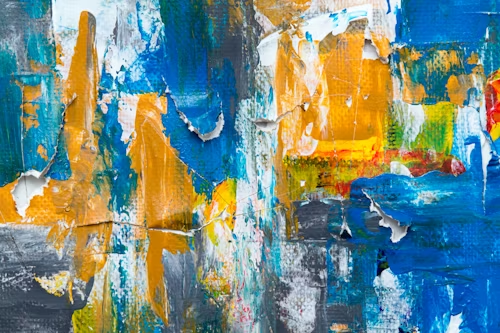Step-by-Step Guide to Using Acrylic Paint on Mirrors
Using paint on mirrors is a good concept, particularly when designing mirrors or when one wants to change the appearance of ordinary mirrors in the house. However, it is good to point out that for the kind of painting that entails designing mirrors, artistic work, or any designs, and patterns, then the most suitable to use among paints like oils, and latex is acrylic.
Why acrylics are a perfect choice for Painting on a Mirror
Acrylics are the ideal choice for many reasons:
- – Quick drying: This type of paint is preferable due to its fast drying properties and this enables one to paint a mirror and complete it.
- – Long lasting: Acrylic paint is not soluble in water hence once it is cured and applied on the glass surface which is non-absorbent/ non-porous, it is light resistant. Designs are long-term; it will take a long time before they are changed, altered, or updated.
- – Easy to use: It can be diluted with water but hardens to a plastic-like finish. This painting is easy.
- – Variety: Acrylics come in a variety of colors and can have a high shine to have a rough and dull surface or they may be of metallic or glitter finish. With proper preparation and methods in doing a program, it is not a problem to have great results.
Key Steps
Merely, adhere to the following comprehensive guidelines while painting on a mirror with acrylics:
Step 1:
It is important to first wash the mirror with soapy water, to remove grease, dust, or any other debris before applying any other cleaning material. Leave the mirror until it is completely dry. Evenly cover the frame around the mirror with blue painter’s tape to avoid the paint from getting on the frame. It also helps in making straight strokes in painting.
Step 2:
Sand and apply primer Re-sand the wall and apply a coat of primer, especially if the preceding step involved painting or sealing. Start by using 600-grit sandpaper and very lightly sand the entire surface of the mirror in a circular motion. This assists in the right adherence of the paint. Wipe the surface with a cloth to get rid of the dirt and dust. Pre-treat all surfaces with the multi-surface acrylic primer and let it dry before moving forward.
Step 3:
Decide on what sort of image or design you would like to paint. With the pencil, lightly draw on the primed mirror surface the outline of the final design that is in place. As for lighting, it has to be clean, in other words, the geometry of the light should not be ambiguous, and the contours should be clear. Take the acrylic paint colors and put them on a palette then apply pressure on them. It might be useful to employ high-quality fine-tip paint brushes.
Step 4
Once pencil sketching is complete, go over the picture with the desired colors to create the outline. With a soft brush paint over the artwork using acrylic paint on the mirror very lightly.
Step 5
Add extra coats and final details. Moreover, you can additionally add another layer of paint once the former layer has dried to intensify the colors. Another aspect that needs to be understood is that any detailed work should be gradually built up in layers. The metallic acrylic paints would need to be used for mirror projects because of the type of mirror surface that is involved.
Strategies to Complete and Secure
- – After it is thoroughly dry, you can use a latex eraser to erase any other gesture lines left on the paper such as pencil drawings.
- – The item should not be cleaned using water or by rubbing it on surfaces employing abrasive materials.
- – Lastly, use the acrylic sealer spray for the paint so that it does not deteriorate through scrapes or wear over the years.
Do you need a second opinion or are you simply dissatisfied with the final products? It is as easy as using a razor to shave off the acrylic paint from the mirror while the paint is wet. Make sure you do not paint the frame of the picture or even the whole picture.
It is not recommended to apply the paints in that definite area of the mirror that is at the backside. In each of the above cases, make sure you allow adequate drying time before applying the next coat. Wash brushes in water while the paint is still wet.
Be artistic using colorful acrylic paints on mirrors!
Related Posts
Boya Crayons Tutorial for Beginners and Beyond
Easy beginner guide to using Boya crayons with pro SkriblBox tips for smooth coloring.
How to Remove Crayon from Paper (Without Damaging It)
Oh no! Your little artist just left a vibrant crayon masterpiece on an important paper,…
What is Abstract Art? Meaning, Famous Examples & Painting Guide
Not every painting has to look like a perfect portrait or a quiet landscape. Some…




